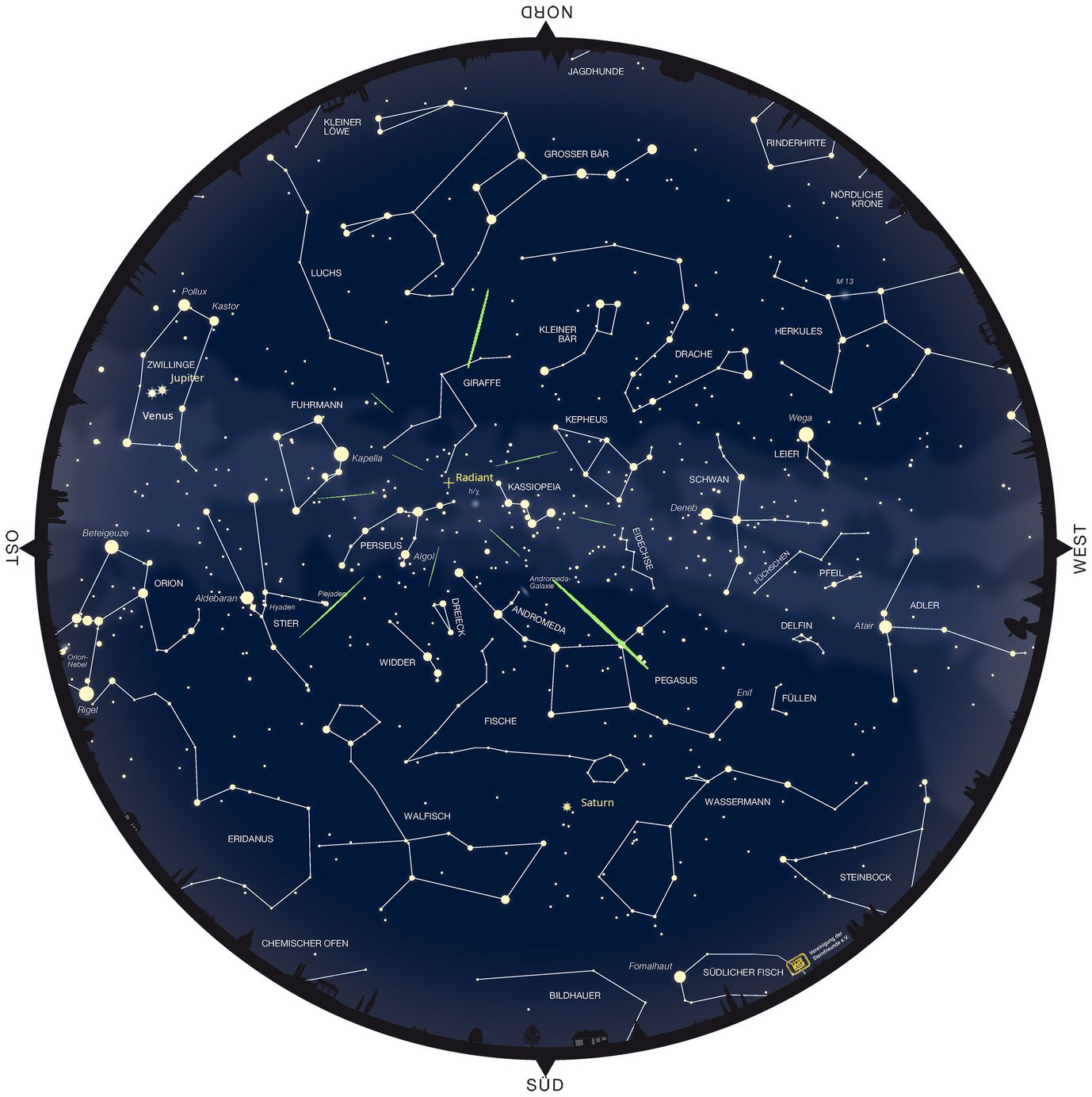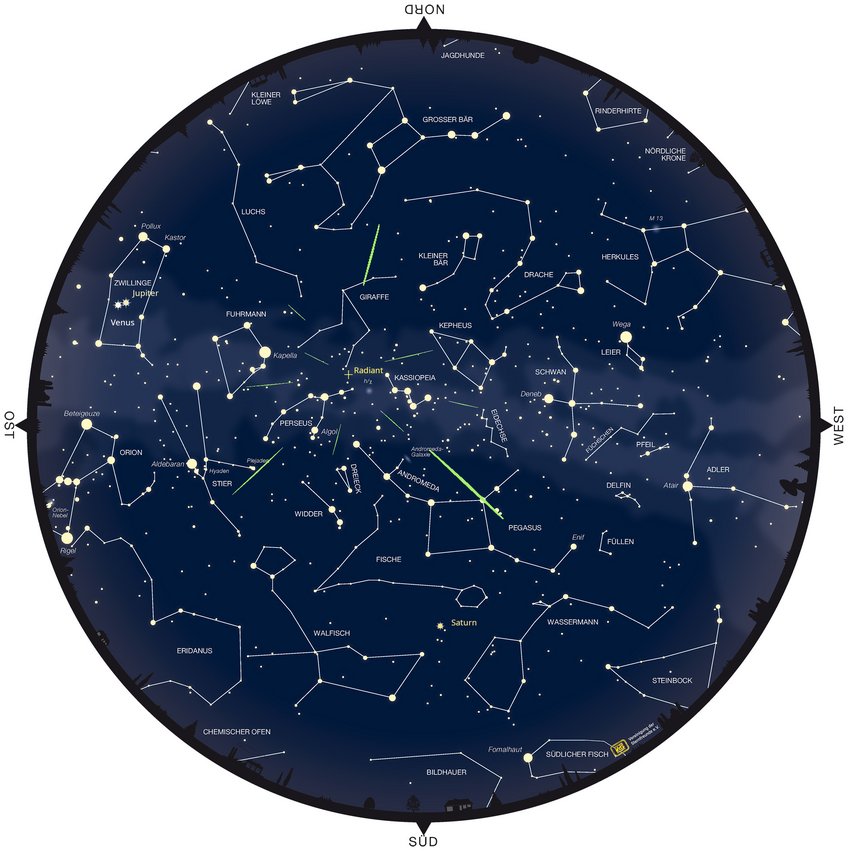Perseids and planets: Rendezvous in the morning sky
Mid-August is Perseids season. However, on the nights with the highest number of meteors, the Moon will be brightening up the sky and spoiling the show this year. Early risers will be rewarded not only with shooting stars, but also with Jupiter and Venus making an appearance in the eastern sky in the morning hours though.
Midsummer is the time for shooting stars: The first Perseid meteors appear in the sky already mid to late July, seemingly coming from the constellation Perseus. The Perseids are a very reliable meteor shower, with a noticeable increase in shooting stars expected every year over a period of days and weeks. The number of shooting stars continues to increase until August 12 and then drops again towards the end of the month.
As with many other meteor showers, the viewing conditions for the Perseids are actually better during the second half of the night when the radiant, the point in the constellation Perseus from which the meteors appear to originate, rises higher and higher above the horizon. However, the same applies for the Moon this year on the nights around the maximum.
Full Moon is on 9 August 2025, and on 12 August, the Moon rises at around 22 CEST, about an hour after sunset. The side of the Moon facing Earth is 83% illuminated, so it noticeably brightens the sky. The moonlight will outshine many of the fainter shooting stars of the Perseid meteor shower, which require a dark sky to be observed. The brighter trails will remain, but the impression of meteors raining from the sky is unlikely to occur this year.
Chances to see the Perseids are best at the beginning of the night, when the twilight sky has already darkened and the Moon has just risen. Low above the horizon, the Moon does not disturb us too much, and the meteors coming from the constellation of Perseus, which is still low above the horizon as well, streak across the entire sky.

Anyone looking for shooting stars early in the morning around the maximum will be treated to a beautiful planetary constellation as a bonus: Jupiter and Venus rise at around 3:30 CEST. An hour later, the two are higher above the horizon and can still be easily observed for a while despite the onset of dawn. The two are together in Gemini, and on 12 August 2025, they will approach each other at less than two full moon diameters. The brighter Venus moves noticeably from night to night, and you can easily follow it with the naked eye as it approaches Jupiter from the right until 11 August and then moves away to the lower left starting on 13 August.
On 20 August 2025, the distance between the two will have grown to 16 full moon diameters when the then waning thin crescent Moon joins them. Low above the eastern horizon, you can also try to spot swift Mercury at dawn. However, it is easier to see the ringed planet Saturn, which is visited by the Moon in Pisces on 12 August and is visible in the south in the morning these days.
The radiant of the Perseids is not fixed in location: In the second half of August, it moves into the neighboring constellation Camelopardalis.
